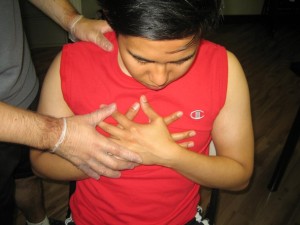Ventricular tachycardia is described as rapid heart rhythm that starts in the ventricles, usually a pulse of more than 100 beats in a minute with at least 3 erratic beats in succession. The ventricles are the 2 lower heart chambers that fill with blood from the atria and sent out to the entire body. This is usually triggered by a malfunction in the electrical system in the heart.
It might only last for a few seconds or much longer. Symptoms do not always arise but if they do, it might include dizziness, lightheadedness and fainting. The condition typically affects those who have heart issues such as cardiomyopathy and coronary artery disease.
What are the indications?
- Fainting
Chest pain or discomfort usually occurs in the center or the left side of the chest - Dizziness
- Chest pain
- Fatigue
- Shortness of breath
Who are at risk for ventricular tachycardia?
One is at higher risk for ventricular tachycardia if:
- An older adult
- Having a family history of ventricular tachycardia
- Diagnosed with a heart condition
- The individual had a previous heart attack
Management of ventricular tachycardia
The objective of treatment for ventricular tachycardia is to fix the heart rhythm right away and prevent future episodes. During an emergency, the treatment for ventricular tachycardia might include:
- CPR
- Electric shock
- Electrical defibrillation
- Anti-arrhythmic medications
The long-term treatment might include oral anti-arrhythmic medications. Nevertheless, these medications are not readily prescribed due to severe side effects.
Other long-term treatment options might include:
- Radiofrequency ablation – an electric current is generated by a radio wave that destroys the abnormal tissues responsible for causing the heart to beat erratically
- Implantable cardioverter defibrillator – this is a device placed inside the chest or abdomen to fix the abnormal heart rhythms
- Cardiac-resynchronization therapy – the procedure involves the implantation of a device that regulates the heartbeat
Quick Note / Disclaimer
The material posted on this page on ventricular tachycardia is for learning and educational purposes only. To learn to recognize and manage circulatory emergencies, register for a first aid and CPR course with Mississauga First Aid.

